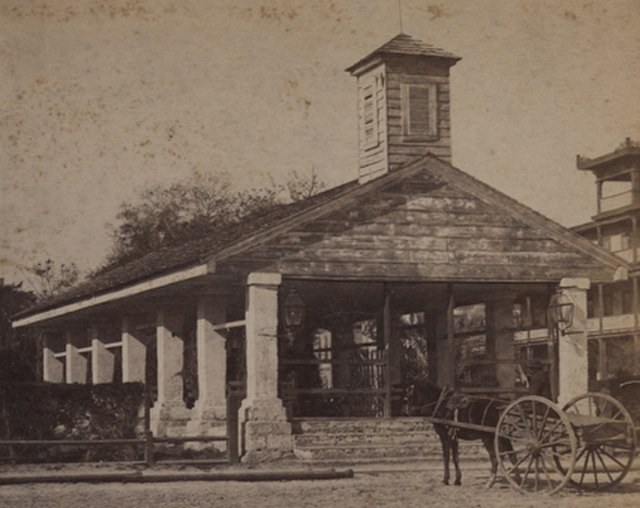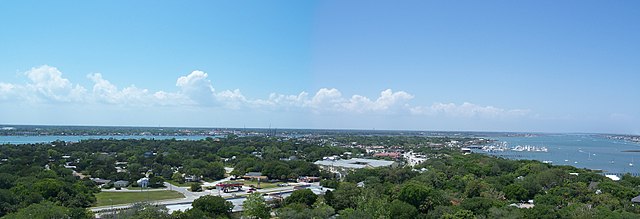Fort Mose, originally known as Gracia Real de Santa Teresa de Mose, and later as Fort Mose, or alternatively, Fort Moosa or Fort Mossa, is a former Spanish fort in St. Augustine, Florida. In 1738, the governor of Spanish Florida, Manuel de Montiano, had the fort established as a free black settlement, the first to be legally sanctioned in what would become the territory of the United States. It was designated a US National Historic Landmark on October 12, 1994.
Site of the old fort
Historical marker, Santa Teresa de Mose (Fort Mose), front
Historical Marker, Santa Teresa de Mose (Fort Mose) (reverse)
Copy of the plan of the fort of Saint Augustine, Florida and its contours by Royal Engineer Pedro Ruiz de Olano, 1740
St. Augustine is a city in and the county seat of St. Johns County located 40 miles south of downtown Jacksonville. The city is on the Atlantic coast of northeastern Florida. Founded in 1565 by Spanish explorers, it is the oldest continuously inhabited European-established settlement in what is now the contiguous United States.
Pedro Menéndez de Avilés moved his colony to the settlement of the Seloy tribe of the Timucua. Their chief gave them the Great House, a structure able to hold several hundred people. Around this meeting house the Spanish dug a moat and added fortifications.
Slave Market, St. Augustine, Florida in 1886
St. Augustine in 1891 from the former San Marco Hotel, Spanish St. on left, Huguenot Cemetery lower left corner, Cordova St. on right
View of St. Augustine from the top of the lighthouse on Anastasia Island








